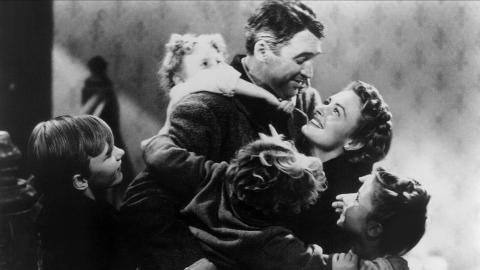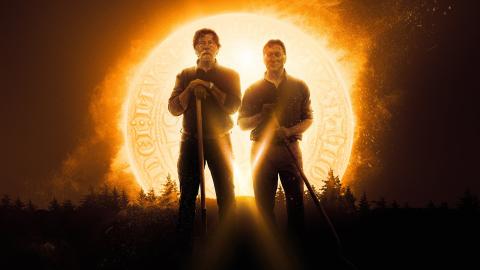Are we returning to the populism of the 1930s?
After a rise that saw the far-right parties come to power through the 1920s and 30s, the 1940s saw many of them banned and the Nazi party was dissolved in 1945.
After a political scandal that has been going on since 2014, involving a number of politicians, Brazil has elected a new president: Jair Bolsonaro. What do you need to know? How about this: he’s a far-right, pro-torture (yes, you read that right) candidate that has earned the nickname the ‘Trump of the Tropics’. And yes, he has Trump’s support.
Sound familiar? This isn’t the first time the country has had a fascist party take control—the 1930s saw the same. And more recently, an authoritarian military dictatorship, founded on nationalist and anti-communism principles, took control of the country from 1964-85 after a coup d’état by the military. It was only after the country began to move back to democracy in the 1970s (under the direction of the then president and former head of the secret service, João Figueiredo) that a candidate that hadn’t been picked by the military was elected and the dictatorship came to an end.
But Bolsonaro’s instigation speaks to a bigger trend. As Trump came to power, so too have we seen far-right candidates campaign for the presidency in France, in Austria and in Holland. The rise of the far-right echoes that of the 1920s and 30s, when the right-wing first took hold. So what happened then?
Most people will point to Italy when the National Fascist Party was established in the 1920s and Benito Mussolini came to power. In the wake of World War One, conditions were such that a new power centred on nationalism and restoring Italy was welcome. Fascism appeared to offer an answer to many of the issues citizens were facing: an economic crisis, huge public debt, inflation and unemployment. It also provided a safety from the threat of communism that had been established in Russia. Fascism meant nationalist unity. It promised a solution.
While the Nazi party and the National Fascist Party are the most obvious examples of the rise of fascism at the time, the ideas were taking hold across Europe and the world.
Hitler saw what Mussolini had accomplished and admired his ideas. The end of the war and terms of the Treaty of Versailles had left Germany economically crippled. As in Italy, a fascist party offered an answer to the problems the country was embedded in. The threat of communism also had an effect, there: communist uprisings had been happening and the Nazi party quashed them while giving an alternative.
But while the Nazi party and the National Fascist Party are the most obvious examples of the rise of fascism at the time, the ideas were taking hold across Europe and the world.
Japan was in close allegiance with Germany and Italy, sharing the same right-wing ideals. Japan signed an anti-communism pact with Germany in 1936 and in 1940, it joined with Germany and Italy in the Tripartite Pact: a military alliance.
In Austria, Engelbert Dollfuss was so inspired by Mussolini’s ideas that in the 1930s, he dissolved parliament and installed himself as a fascist dictator. The regime lasted until Austria became a part of Nazi Germany. António de Oliveira Salazar was equally inspired by Mussolini and created a fascist regime in Portugal: the Estado Novo regime.
Finland also saw the establishment of a right-wing party. The Lapau Movement began as a nationalist and anti-communist party but turned its politics to the far-right. It was banned in 1932 after it staged a failed coup d'état, but another nationalist and anti-communist party was established in its wake.
The National Socialist Movement of Chile formed in 1932. The party was in support of Hitler and Nazism, with a strong emphasis on his anti-Semitic ideas (although it later abandoned this particular element).
The movement extended to Croatia, where a far-right party was established as early as 1929. Its focus on creating a ‘Greater Croatia’, the Ustasha – Croatian Revolutionary Movement aligned with the Nazi party in its wish to racially purify the country, a belief that led to the slaughter of thousands. When Yugoslavia was invaded in 1941, the Independent State of Croatia was formed and the party came to power.
After a rise that saw the far-right parties come to power through the 1920s and 30s, the 1940s saw many of them banned and the Nazi party was dissolved in 1945.
If the aftermath of World War One set the perfect stage for a rise of the right-wing, the Second World War furthered it. Thanks to German invasions, Hitler’s ideas were forcibly spread farther. The invasion of Norway led to a fascist party coming to power until 1943, although it received little support. And fascism inspired parties in Poland, Hungary, South Africa, Romania and Slovakia.
After France was defeated by Germany, the Vichy regime collaborated with the Nazis. Under the power of Philippe Pétain, ‘undesirables’ were persecuted, internment camps were used and raids were carried out. In 1942, the Vel' d'Hiv Roundup saw over 13,000 Jewish people arrested and taken to Auschwitz. Many died on the way and those that did were sent to the gas chambers.
After a rise that saw the far-right parties come to power through the 1920s and 30s, the 1940s saw many of them banned and the Nazi party was dissolved in 1945. Now, however, the same political ideas are springing up after a pattern of similar economic circumstances. We have been through a world recession (and could be facing another one), seen a rise in austerity, unemployment, and a drop in living standards.
In 2016, Labour MP Jo Cox was killed by a man allegedly obsessed with Nazis and white supremacy. That same year, a neo-Nazi party was banned in the UK for the first time in history. Then there’s Brexit.
Last year, the Charlottesville riots saw a rally of white supremacists. After counter-protestors gathered, a white supremacist drove his car into the crowd, killing one and injuring 19 others. The Ku Klux Klan became more visible.
There’s also been a rise in religious hate crime. White Supremacist Dylan Roof killed nine people in a church in 2015. In 2017, a van was driven into a crowd of people gathered outside Finsbury Park Mosque. And now, we’ve had the mass shooting at a Pittsburgh Synagogue, when an anti-Semite man shot and killed 11 people.
2018 might not be the 1920s, but unfortunately, fascism still exists and there’s a current rise of the right-wing that echoes what happened before.
















